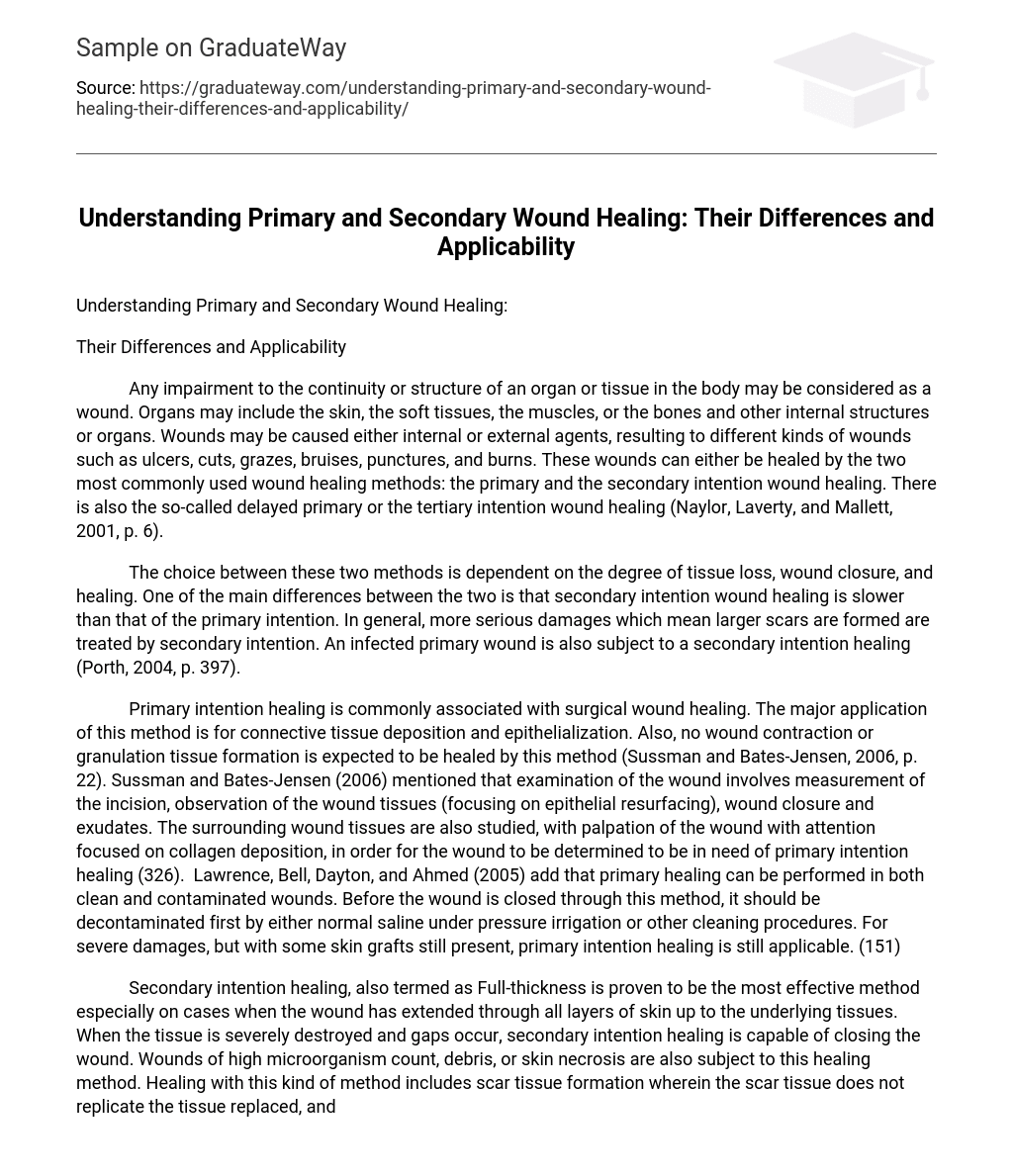Understanding Primary and Secondary Wound Healing:
Their Differences and Applicability
Any impairment to the continuity or structure of an organ or tissue in the body may be considered as a wound. Organs may include the skin, the soft tissues, the muscles, or the bones and other internal structures or organs. Wounds may be caused either internal or external agents, resulting to different kinds of wounds such as ulcers, cuts, grazes, bruises, punctures, and burns. These wounds can either be healed by the two most commonly used wound healing methods: the primary and the secondary intention wound healing. There is also the so-called delayed primary or the tertiary intention wound healing (Naylor, Laverty, and Mallett, 2001, p. 6).
The choice between these two methods is dependent on the degree of tissue loss, wound closure, and healing. One of the main differences between the two is that secondary intention wound healing is slower than that of the primary intention. In general, more serious damages which mean larger scars are formed are treated by secondary intention. An infected primary wound is also subject to a secondary intention healing (Porth, 2004, p. 397).
Primary intention healing is commonly associated with surgical wound healing. The major application of this method is for connective tissue deposition and epithelialization. Also, no wound contraction or granulation tissue formation is expected to be healed by this method (Sussman and Bates-Jensen, 2006, p. 22). Sussman and Bates-Jensen (2006) mentioned that examination of the wound involves measurement of the incision, observation of the wound tissues (focusing on epithelial resurfacing), wound closure and exudates. The surrounding wound tissues are also studied, with palpation of the wound with attention focused on collagen deposition, in order for the wound to be determined to be in need of primary intention healing (326). Lawrence, Bell, Dayton, and Ahmed (2005) add that primary healing can be performed in both clean and contaminated wounds. Before the wound is closed through this method, it should be decontaminated first by either normal saline under pressure irrigation or other cleaning procedures. For severe damages, but with some skin grafts still present, primary intention healing is still applicable. (151)
Secondary intention healing, also termed as Full-thickness is proven to be the most effective method especially on cases when the wound has extended through all layers of skin up to the underlying tissues. When the tissue is severely destroyed and gaps occur, secondary intention healing is capable of closing the wound. Wounds of high microorganism count, debris, or skin necrosis are also subject to this healing method. Healing with this kind of method includes scar tissue formation wherein the scar tissue does not replicate the tissue replaced, and is essentially not with the same elasticity as the replaced tissue. This technique is associated with chronic wounds, a case where the wound has failed to proceed with an orderly and timely process to fabricate an anatomic and functional integrity (Sussman and Bates-Jensen, 2006, p. 22).
References
Lawrence, P. F., Bell, R. M., Dayton, M. T., & Ahmed, M. I. (2005). Essentials of General Surgery, Available from http://books.google.com/books?id=UtGYmvw2Id4C
Naylor, W., Laverty, D., & Mallett, J. (2001). The Royal Marsden Hospital Handbook of Wound Management in Cancer Care, Available from http://books.google.com/books?id=3SC3_KWossUC
Porth, C. M. (2004). Pathophysiology: Concepts of Altered Health States, Available from http://books.google.com/books?id=Cs1Ur6s9D3cC
Sussman, C., & Bates-Jensen, B. M. (2006). Wound Care: A Collaborative Practice Manual, Available from http://books.google.com/books?id=LaNuvQTjYeEC





